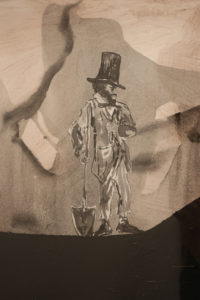Glittery sequins meet antique quilts in Sanford Biggers’ first solo show at Marianne Boesky Gallery, where the artist synthesizes folk tradition and minimalism in this wall hanging titled ‘Ooo Oui.’ (On view in Chelsea through Oct 21st).
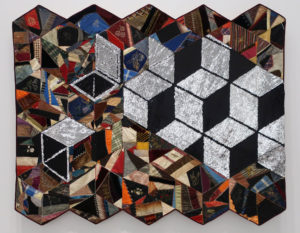
Glittery sequins meet antique quilts in Sanford Biggers’ first solo show at Marianne Boesky Gallery, where the artist synthesizes folk tradition and minimalism in this wall hanging titled ‘Ooo Oui.’ (On view in Chelsea through Oct 21st).

Kazuko Miyamoto’s ‘Female I’ reclines along the floor of Zuricher Gallery like a taught, transparent odalisque, a shifting combination of representational form and pure abstraction that rethinks minimalism’s relationship to the organic world. (On the Lower East Side through Oct 22nd).
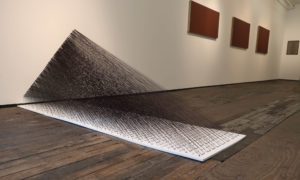
Oversized wineglasses, cups, a fork and other objects litter worktables in Amanda Ross-Ho’s latest solo show at Chelsea’s Mitchell Innes & Nash, where the LA based artist spent August making paintings of clock faces (see the normal-sized glass holding goldfish crackers at middle right). Based on vintage paper clock surfaces that she purchased from eBay and used for note-taking, the clocks unmoor time (Ross-Ho recently lost her long-term studio) and the surreally enlarged elements from everyday life become inexplicably important. (On view through Oct 14th).
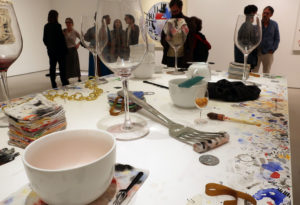
Sandblasted posters anchored by wood dowels by Ishmael Randall Weeks speak to the eroding effects of time, yet the entropy he evokes speaks more of uncovering the forgotten past than obliterating it. (At Van Doren Waxter through Oct 28th).
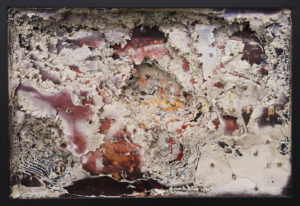
The U.S.’s dark and violent past continues to inspire Kara Walker’s new paintings and drawings; here, Walker presents a portrait of Grandison Harris, a 19th century man enslaved and assigned to rob graves to supply the classrooms of anatomy students at a Georgia medical college. After the Civil War, financial constraints forced his decision to return to the college and continue to supply bodies until his eventual death and burial in the same cemetery that he revisited in his working life. (On view in Chelsea at Sikkema Jenkins & Co. through Sept 16th).
